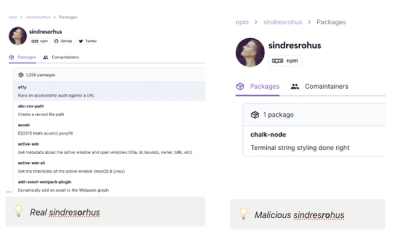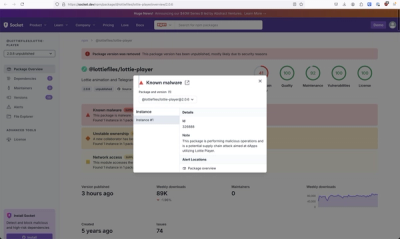fifinet
Tiny in-memory graph database and query engine implementation.
The query engine looks a lot like the Gremlin traversal engine, and this
module is heavily based upon Dagoba by Dann
Toliver.
What's this?
This is a tiny implementation of an in-memory graph database, with a non-optimized
but functional query engine based on a fluent API.
The graph is a property graph, which means that vertices and edges can have
arbitrary properties which you can use to store information in.
You can then use the query functionality to query the database.
Creating a graph
Define your own types to hold the properties of vertices and edges.
On vertices, the _id property is special: it will hold the ID of the
vertex. You can provide one, otherwise one will be assigned automatically.
On edges, the _label property is special: it is the type of edge. It is
optional, in case you only have one type of edge.
Creating a graph looks like this:
import * as fn from 'fifinet';
interface GreekProps {
species: 'god' | 'titan' | 'halfgod' | 'mortal';
}
interface EdgeProps {
}
const graph = new fn.Graph<GreekProps, EdgeProps>(
[
{ _id: 'zeus', species: 'god' },
{ _id: 'herakles', species: 'halfgod' },
{ _id: 'alcmene', species: 'mortal' },
{ _id: 'amphitryon', species: 'mortal' },
], [
{ _out: 'amphitryon', _in: 'alcmene', _label: 'marriedTo' },
{ _out: 'alcmene', _in: 'amphitryon', _label: 'marriedTo' },
{ _out: 'zeus', _in: 'amphitryon', _label: 'impersonates' },
{ _out: 'zeus', _in: 'alcmene', _label: 'rapes' },
{ _out: 'herakles', _in: 'zeus', _label: 'childOf' },
{ _out: 'herakles', _in: 'alcmene', _label: 'childOf' },
],
);
The graph object also has methods to mutate and inspect the graph:
graph.addVertices([
{ _id: 'perseus', species: 'mortal' },
{ _id: 'electryon', species: 'mortal' },
]);
graph.addEges([
{ _out: 'perseus', _in: 'zeus', _label: 'childOf' },
{ _out: 'electryon', _in: 'perseus', _label: 'childOf' },
{ _out: 'alcmene', _in: 'electryon', _label: 'childOf' },
]);
Querying
Querying starts with the graph.v() function, which selects one or more
vertices from the graphs. You then chain a number of operations onto the
query, before finally calling run() to execute the query:
const results = graph.v()..run();
For example, to find all the parents of Herakles:
const results = graph.v('herakles').out('childOf').run();
Graph: v()
Returns a set of nodes to start the query. The following filter call
patterns are accepted:
graph.v()
graph.v('zeus')
graph.v(['zeus', 'herakles'])
graph.v({ species: 'god' })
Query: in()/out()/inAny()/outAny()
Traverse edges from the currently selected set of nodes:
in, out: traverse one edge either coming into or going
out of the current node.inAny, outAny: traverse one or more edges either coming into or going
out of the current node.
Takes an argument filtering the edges:
graph.v().out()
graph.v().out('marriedTo')
graph.v().out(['marriedTo', 'childOf'])
graph.v().out({ _label: 'marriedTo' })
Query: property()
For convenience, return a properties from each vertex in the query
result set, instead of returning the whole query object.
graph.v('zeus').in('childOf').property('species').run()
Query: filter()
Filter the current set of nodes down by subsetting it.
query.filter({ species: 'mortal' })
query.filter(vertex => vertex.species === 'mortal')
Example:
graph.v()
.filter({ species: 'halfgod' })
.run()
Query: unique()
If the query would yield duplicate nodes, return only the unique
ones.
graph.v('zeus')
.in('childOf')
.out('childOf')
.unique()
.run()
Query: take()
Instead of returning all results, return only the next N.
You can run the query multiple times to obtain multiple subsets of results:
const query = graph.v().take(2);
query.run();
query.run();
Query: as()
Label the current set of vertices in the query with an alias. This
can be used to refer back to the current vertex set later on, using
other operators like merge(), except() and back().
g.v().as('root')
Query: merge()
Replace the current vertex set with those of one or more aliases from
previous node sets.
To return Zeus' children and grandchildren:
g.v('zeus')
.in('childOf').as('children')
.in('childOf').as('grandchildren')
.merge('children', 'grandchildren')
.run()
Query: except()
Exclude the vertices from a previously named vertex set from the current
set of vertices.
The following returns all of Herakles' siblings who aren't Herakles:
g.v('herakles').as('me')
.out('childOf').in('childOf')
.except('me')
.run()
Query: back()/having()
Back returns to a previous vertex in the query, but only if the query
so far has been successful.
The following returns all nodes that have mortal children:
g.v().as('me')
.in('childOf').filter({ species: 'mortal' })
.back('me')
.unique()
.run()
having() can be used as an alias for as()/back()/unique():
g.v()
.having(me => me.in('childOf').filter({ species: 'mortal' ]))
.run()



